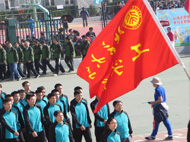主办:能源与资源工程系
报告人:Professor Yu-Shu Wu Energy Modeling Group (EMG) Department of Petroleum Engineering, Colorado School of Mines
时间:6月24日(周一)下午2:00
地点:二教210室
主持人:邸 元
报告内容摘要:
Human beings have used geothermal energy resources perhaps for thousands of years. Electricity generation from geothermal energy, however, did not start until the 1950’s-1960’s. Geothermal energy from enhanced or engineered geothermal systems (EGS), or non-hydrothermal resources, is highly notable among the sustainable energy resources, because of its abundance and cleanness. The EGS concept has received worldwide attention and undergone intensive studies in the last decade in the US and around the world. In comparison, hydrothermal reservoir resource, the 'low-hanging fruit' of geothermal energy, is very limited in amount or availability, while the EGS is extensive and has great potential to supply the world with the needed energy almost permanently. The EGS, in essence, is an engineered subsurface heat mining approach, where water or another suitable heat exchange fluid, is injected into hot formations to extract heat from the hot dry rock (HDR). Specifically, EGS relies on the principle that injected water, or another working fluid, penetrates deep into the reservoirs through fractures to adsorb large quantities of thermal energy by contact with the hot rock. Finally, the heated fluid is produced through production wells for electricity generation or other usage.
Even with the significant progress in laboratory, modelling, and promising field demonstrations, the EGS energy cannot compete currently with other commonly used forms of energy yet, such as oil and gas. This is primarily because of both technical and economic reasons. There is a great need for further research and development, and investment before EGS energy becomes viable as a primary energy resource. Heat mining from fractured EGS reservoirs is subject to complex interactions within the reservoir rock involving high temperature heat exchange, multiphase flow, rock deformation, and chemical reactions. We must thoroughly understand these thermal-hydrological-mechanical (THM) processes or thermal-hydrological-mechanical-chemical (THMC) interactions before any successful field operation is undertaken.
In this talk, we will present a THM model/simulator (TOUGH2-EGS) and its application for simulation of EGS reservoirs. The simulator couples heat flow with geomechanics, which is able to describe complex fluid and heat flow behavior in multiphase, multi-component, geothermal reservoirs. In this model, the fully coupled fluid and heat flow-geomechanics formulation is developed from the linear elastic theory for the poro-elastic system. The rock compaction is then correlated with stress-and temperature dependent rock properties through the flow-stress coupling process. We will present several simulation examples for insight of geomechanics impacts on fluid and heat flow processes in EGS reservoirs.
报告人简介:
Yu-Shu Wu is a professor, Foundation CMG Reservoir Modeling Chair, and director of Energy Modeling Group (EMG) research center in the Petroleum Engineering Department at the Colorado School of Mines (CSM), USA. He is a fellow of the Geological Society of America. At CSM, he teaches and carries out research in reservoir engineering, multiphase fluid and heat flow, geomechanics, unconventional oil and gas reservoir dynamics, CO2 geosequestration and EOR, geothermal engineering, and numerical reservoir simulation. He leads the EMG in its research effort in (1) modeling Thermal-Hydraulic-Mechanical processes; (2) coupled processes of multiphase fluid and heat flow, geomechanics, and chemical transport in porous and fractured media; (3) CO2 sequestration and EOR application; (4) improved formation stimulation/cryogenic fracturing technologies; and (5) advanced reservoir-simulation technologies. Previously, he was a staff scientist with the Earth Sciences Division of Lawrence Berkeley National Laboratory for 14 years (1995–2008). During his career, he has authored or coauthored 120+ peer-reviewed journal papers and 17 peer-reviewed books/chapters as well as more than 70 SPE papers.
欢迎广大老师和同学们参加!









